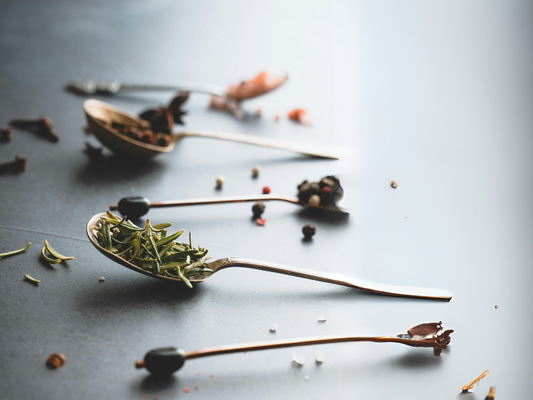
Spice, Strength, and Softness: Ancient Ingredients for Modern Motherhood
Returning to the Root of Nourishment
Postpartum recovery is often painted as a blur of sleepless nights and endless diaper changes. What’s less spoken about—but deeply felt—is how dramatically a woman’s body, mind, and spirit are transformed. As modern mothers navigate this threshold, many are searching for something more grounded than the quick-fix wellness fads of today. They crave sustenance that heals from the inside out—food that whispers the wisdom of women before them.
Did you know that in Ayurveda, it’s believed that the 42 days after giving birth set the tone for the next 42 years of a woman’s health? That fact alone reveals how vital postpartum nourishment truly is. At MotherBees, we’ve long understood this sacred window. That’s why our pantry blends and healing condiments aren’t just delicious—they’re deeply rooted in ancient knowledge.
The History of Postpartum Food Traditions
Across cultures—from China’s “sitting month” to Morocco’s 40-day rest period—food has always been medicine for the postpartum mother. These traditions emphasized warm, spiced, easy-to-digest foods rich in nutrients and flavor. The meals weren’t only about calories; they were about healing, rebuilding, and rebalancing.
In traditional Chinese medicine, for instance, warming spices and slow-cooked broths were used to restore “Qi” (life force energy). Similarly, Latin American cultures used herbs and tamarind to help the uterus contract and the body detox gently after childbirth. These food rituals weren’t indulgent—they were essential, grounded in respect for the mother's transformation.
Today, while medical science often overlooks the nutritional needs of postpartum mothers, many dietitians and researchers are echoing the same truths our ancestors lived by. Studies now show that nutrient-dense, anti-inflammatory diets significantly improve postpartum recovery and mental health. (Source: National Library of Medicine)
Tamarind for Iron and Digestive Health
Tamarind is a tangy, dark fruit that has been used for centuries in Ayurvedic, African, and South Asian cuisines. Rich in polyphenols, magnesium, and vitamin C, tamarind has potent antioxidant properties and is excellent for digestion. It’s especially valuable postpartum for its gentle laxative effects and its ability to support iron absorption—a crucial benefit for mothers recovering from blood loss.
A 2018 study in Food Chemistry confirmed that tamarind pulp possesses significant antioxidant and antimicrobial activity, which supports overall gut health. At MotherBees, we include tamarind in many of our postpartum meal formulas because of its gentle cleansing effect and grounding flavor.
To experience tamarind’s benefits in your own kitchen, try our Organic Tamarind Paste—a pantry essential that can be added to soups, sauces, or warm teas. Combine it with Diamond Kosher Salt and a touch of Lemon Extract to create a mineral-rich tonic that’s both balancing and revitalizing.
Turmeric and Saffron for Inflammation and Mood
Turmeric has long been heralded in Indian and Southeast Asian traditions for its anti-inflammatory magic. Curcumin, its active compound, has been shown in studies to reduce joint pain, improve mood, and support brain function—benefits that are incredibly relevant to postpartum recovery.
Our Supercritical Turmeric Extract is one of the most potent forms available—ideal for golden milk, soups, or a soothing turmeric tea before bed. Blend it with our Golden Herb Salt or Porcini Sea Salt to enrich any dish with earthy warmth and medicinal depth.
Saffron, often called “red gold,” has mood-boosting properties that make it especially helpful for mothers navigating postpartum blues. One clinical trial revealed that saffron was just as effective as fluoxetine (an antidepressant) in reducing symptoms of postpartum depression. We offer two kinds—Kashmiri Saffron and Saffron Coupe Grade Spanish—each perfect for infusing into broths, porridges, or milk teas. Just a pinch goes a long way in bringing brightness to both food and mood.
How to Bring Old-World Ingredients into Today’s Kitchen
It’s easier than you think to incorporate ancient ingredients into your daily life. You don’t need to overhaul your pantry—just add key staples that carry both flavor and function. For example, toss steamed veggies with our Green Goddess Dressing Mix or sprinkle California Bold Pepper Blend on eggs for an immune-supportive kick.
Use Taco Seasoning and Chinese Five Spice to transform simple proteins into deeply nourishing meals, or add Chai Spices to a warm cup of almond milk (spiked with a few drops of Almond Extract) to soothe and ground you at the end of a long day.
And don’t forget the little things: a dash of Dill Weed in bone broth, a spoon of Organic Balsamic Vinegar to finish a stew, or a pinch of Pure Himalayan Pink Salt on roasted squash can elevate both taste and therapeutic value. These small touches carry centuries of wisdom to your table.
Why Postpartum Nourishment is a Sacred Practice
To feed the postpartum mother is to hold her in her most vulnerable, most powerful form. It’s not just about nutrients—it’s about offering care, reverence, and love through the medium of food. Each spoonful becomes a thread between generations of women who have all walked this path.
Modern research validates what traditional cultures have always known: nourishing food improves healing, mood, lactation, and overall well-being. But more than that, it allows a mother to feel seen and honored. That’s why we call our approach at MotherBees “a return to the sacred.” Because healing doesn’t come from rushing—it comes from remembering.
Coming Home to the Table
In the postpartum season, food isn’t just fuel—it’s medicine, ritual, and connection. By embracing ancient ingredients like tamarind, turmeric, and saffron, we create meals that are as nurturing as they are flavorful. Whether you’re a new mother or someone who loves one, these foods invite you to slow down and honor the transition. They whisper old truths: that softness and strength can live in the same body. That the kitchen is a temple. And that healing begins, one spice at a time.











